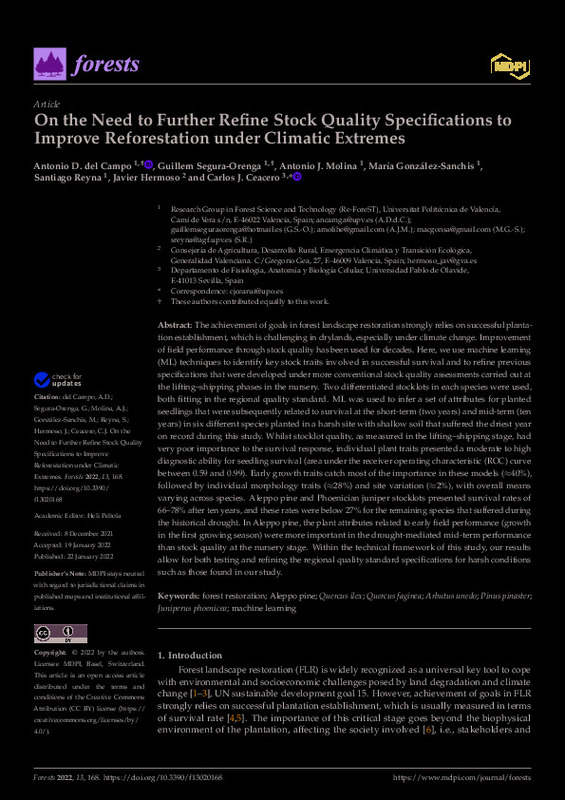JavaScript is disabled for your browser. Some features of this site may not work without it.
Buscar en RiuNet
Listar
Mi cuenta
Estadísticas
Ayuda RiuNet
Admin. UPV
On the Need to Further Refine Stock Quality Specifications to Improve Reforestation under Climatic Extremes
Mostrar el registro completo del ítem
Campo García, ADD.; Segura-Orenga, G.; Molina, AJ.; González-Sanchis, M.; Reyna, S.; Hermoso, J.; Ceacero, CJ. (2022). On the Need to Further Refine Stock Quality Specifications to Improve Reforestation under Climatic Extremes. Forests. 13(2):1-20. https://doi.org/10.3390/f13020168
Por favor, use este identificador para citar o enlazar este ítem: http://hdl.handle.net/10251/190533
Ficheros en el ítem
Metadatos del ítem
| Título: | On the Need to Further Refine Stock Quality Specifications to Improve Reforestation under Climatic Extremes | |
| Autor: | Segura-Orenga, Guillem Hermoso, Javier Ceacero, Carlos J. | |
| Entidad UPV: |
|
|
| Fecha difusión: |
|
|
| Resumen: |
[EN] The achievement of goals in forest landscape restoration strongly relies on successful plantation establishment, which is challenging in drylands, especially under climate change. Improvement of field performance ...[+]
|
|
| Palabras clave: |
|
|
| Derechos de uso: | Reconocimiento (by) | |
| Fuente: |
|
|
| DOI: |
|
|
| Editorial: |
|
|
| Versión del editor: | https://doi.org/10.3390/f13020168 | |
| Coste APC: |
|
|
| Código del Proyecto: |
|
|
| Agradecimientos: |
This study is part of research projects: "Comprehensive quality control of the reforestation works in the public forest of Cortes de Pallas, Valencia" signed between UPV-ReForeST and the state-owned company TRAGSA, and ...[+]
|
|
| Tipo: |
|









